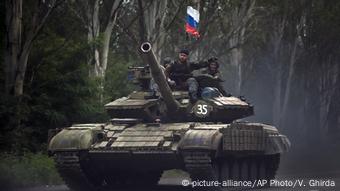
Russian military during the annexation of Crimea, March 2014
A power vacuum arose in Kyiv, and in March 2014 Russia annexed Crimea. It was a turning point, the beginning of an undeclared war. At the same time, Russian and local paramilitary structures gave impetus to separatism in the Donbass, "people's republics" were proclaimed in Donetsk and Luhansk, which were led by people who had come from the Russian Federation in unmarked uniforms. Kyiv reacted slowly, waited for the presidential elections at the end of May, and only then decided on a large-scale use of force, which it called the "anti-terrorist operation" (ATO).
In early June 2014, in France, at events marking the 70th anniversary of the Allied landings in Normandy, newly elected President of Ukraine Petro Poroshenko met for the first time with his Russian counterpart Putin through the mediation of the leaders of Germany and France. This is how the "Norman format" was born. In the summer, the Ukrainian army began to push back the separatists, but at the end of August, Russia, according to Kyiv, used its army on a large scale in the Donbass. Moscow denies this. Ukrainian forces were defeated near Ilovaisk, which was the peak of the conflict. The war along the entire front line ended with the signing of a ceasefire in Minsk in September, which was quickly broken.

Pro-Russian separatist tank near Donetsk, 2015
Then the positional war began. In early 2015, the separatists went on a broad offensive. Kyiv again accused Moscow of using an army without identification marks, the Russian Federation again denied everything. Ukrainian forces were defeated near the hub city of Debaltseve, which they had to leave in a hurry. Then, with the mediation of Germany and France, "Minsk-2" was signed, an agreement that still remains the main document for resolving the conflict. Not a single one of its points has been fully implemented, for which the parties accuse each other.
The last time a breakthrough seemed possible was in the summer and autumn of 2019, when the parties agreed and implemented the withdrawal of forces in several areas. But after the Normandy format summit in Paris, there were no more meetings. Russia refuses to communicate directly with Ukrainian President Volodymyr Zelensky, accusing him of failing to implement Minsk-2. In 2021, the Russian Federation twice pulled troops to the borders of Ukraine - in spring and late autumn. In December, President Putin for the first time issued an ultimatum to the United States and NATO not to accept Ukraine and other post-Soviet countries into the alliance, and not to provide them with military assistance. The Alliance refused.